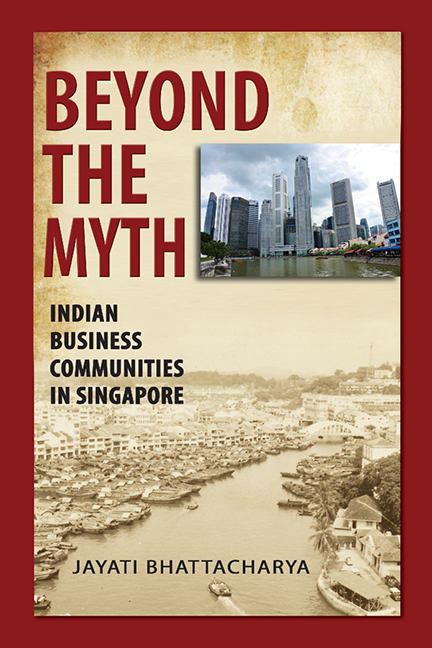Book contents
- Frontmatter
- Dedication
- Contents
- List of Map, Tables and Figures
- Message by Mr R. Narayanmohan
- Foreword by Professor Tan Tai Yong
- Message by Ambassador K. Kesavapany
- Acknowledgements
- List of Abbreviations
- Introduction
- PART ONE
- PART TWO
- Conclusion: Surging Forward
- Appendices
- Select Bibliography
- Index
- About the Author
- Frontmatter
- Dedication
- Contents
- List of Map, Tables and Figures
- Message by Mr R. Narayanmohan
- Foreword by Professor Tan Tai Yong
- Message by Ambassador K. Kesavapany
- Acknowledgements
- List of Abbreviations
- Introduction
- PART ONE
- PART TWO
- Conclusion: Surging Forward
- Appendices
- Select Bibliography
- Index
- About the Author
Summary
Conventional historiography has had a tendency of associating the migration patterns of Indians to considerations of amelioration of their livelihood standards that was facilitated by the mechanisms of a hegemonic colonial economy and administration. Traditionally, attention has been generally focused on that largest segment of the minority ethnic groups of the region, a large social component of which comprised of migrant labour. Contrary to popular belief, large scale transnational flows of capital, goods and people were often well-organized into efficient systems of networks through different phases in history. In spite of intra-community differences in matters of castes or religion, these transnational connections were carefully bound by kinship ties and community networks that facilitated their global outreach much before the colonists had appeared on the scene. Colonial intervention prompted them to reorganize and negotiate their business activities emerging out of opportunities and conveniences in the macroeconomic structure of colonial hegemony. Right from ancient times, Asia was in the throes of globalization that was demonstrated through the extensive trading systems within Asia, that is, China, Southeast Asia and India that extended as far as the trading systems of the Persian Gulf and the Mediterranean territories. Asian states expeditiously demonstrated their capacity and capability to harness the benefits of globalization prior to the arrival of the colonial rulers. In that context, it would be helpful to remember that even in the nineteenth century Asia contributed around one-third of the global economy.
That the Indian business communities are a minority amongst a minority in the demographic structure of Southeast Asia cannot be contested, but their importance, both economically and socially, requires attention and consideration of greater analysis and research. For the people of the Indian subcontinent, the interregional spatial mobility had not been an introduction of the colonists — the traders, merchants, pilgrims and mariners were, in the words of Sugata Bose, tied to the world of the Indian Ocean “by webs of economic and cultural relationships” … with “flexible internal and external boundaries”. This book makes an effort to draw a linear narrative of the ethnic Indian business community through the generations, particularly since the coming of Raffles to the island, dealing with its heterogeneities and complexities in matters linguistic, economic and cultural, and attempts to situate them in the larger framework of the multicultural background in the Singapore milieu.
- Type
- Chapter
- Information
- Beyond the MythIndian Business Communities in Singapore, pp. 1 - 20Publisher: ISEAS–Yusof Ishak InstitutePrint publication year: 2011

